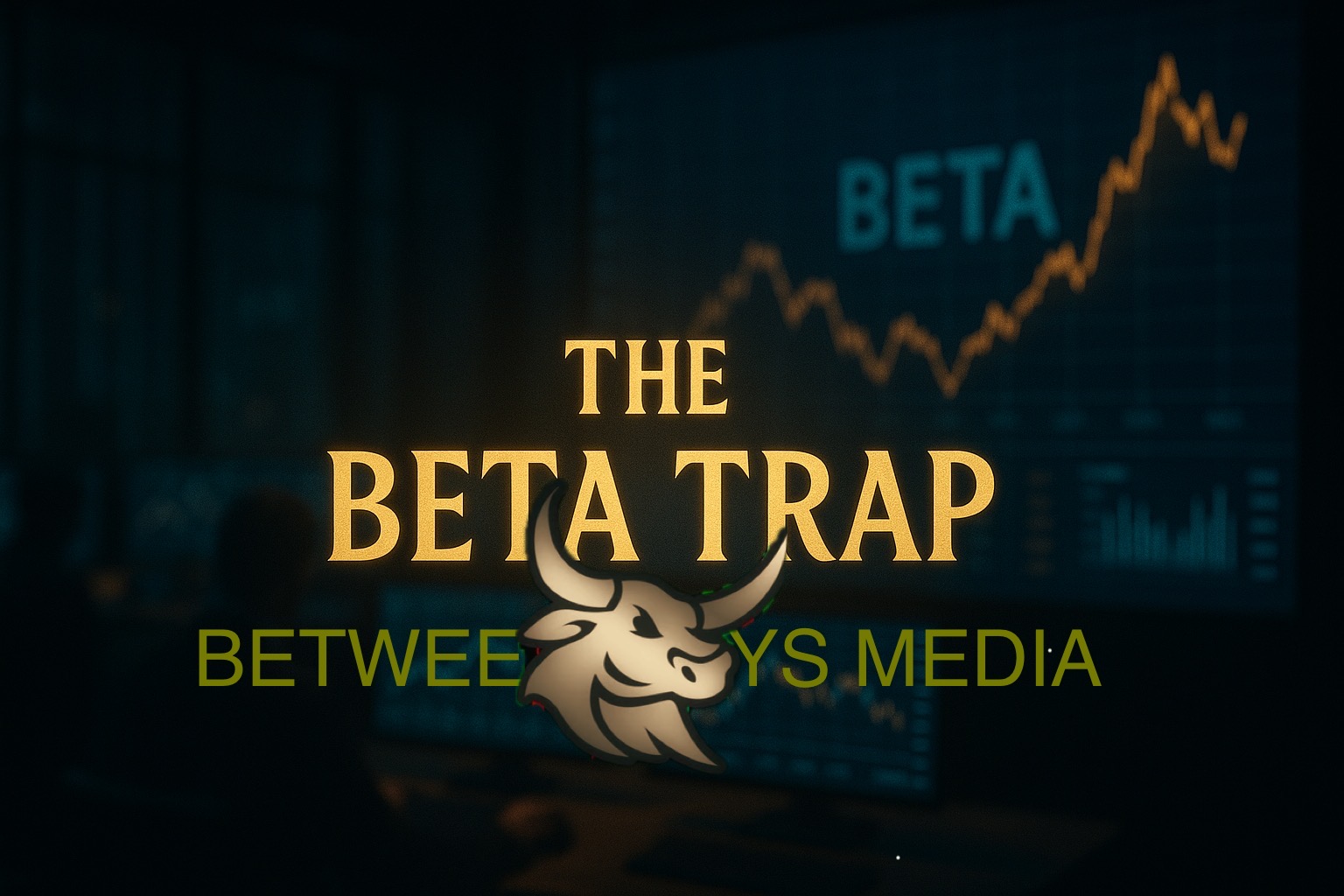🎙️ Betweenplays Media presents:
🧠 Understanding Beta — The Pulse of Market Risk
In the world of investing, “beta” is more than just a number beside a stock — it’s a window into how that stock behaves compared to the overall market. Think of beta as a heartbeat monitor for volatility.
A beta of 1.0 means a stock’s price tends to move in sync with the market.
- If the S&P 500 rises 1%, a stock with beta 1.0 is expected to rise 1%.
- If the market drops 2%, that same stock might fall roughly 2%.
But here’s where things get interesting:
- High-beta stocks (above 1) — Tech companies, small caps, and speculative growth plays. They can soar in bull markets but plunge just as fast when fear strikes.
- Example: If Apple (AAPL) has a beta of 1.25, and the market rallies 4%, Apple might rise 5%. The catch? That same beta means it could drop faster in a downturn.
- Low-beta stocks (below 1) — Utilities, consumer staples, and healthcare. They move slower, providing stability during turbulence.
- Example: A company like Procter & Gamble (PG), with a beta of 0.6, tends to be less shaken by daily swings — perfect for conservative investors.
- Negative-beta assets — Rare and often defensive, such as gold ETFs, which may rise when the market falls.
📊 Why Beta Matters
Beta is crucial for understanding risk exposure. It tells you how a stock behaves when markets shift — a key insight for portfolio balance.
For investors building long-term wealth, beta helps answer:
- Am I too exposed to market volatility?
- Is my portfolio built for stability or growth?
- Do my investments react in harmony — or chaos — when the S&P 500 sneezes?
High-beta stocks can amplify returns when momentum is strong. But they also magnify losses when sentiment turns sour. Low-beta plays can smooth the ride, preserving capital during storms but often lagging during rallies.
⚖️ The Pros and Cons of Fixating on Beta
✅ Pros
- Provides a quick, numerical measure of volatility.
- Helps investors align risk tolerance with stock behavior.
- A useful tool in portfolio construction and hedging.
❌ Cons
- Beta doesn’t predict the future — it’s based on historical data. A company’s beta can shift drastically when new products, leadership, or macro conditions change.
- Beta ignores fundamentals — it tells you how much a stock moves, not why. A company could be highly volatile because of innovation… or because it’s circling the drain.
- Beta is market-relative — if the entire market is overvalued, a “low-beta” stock could still be risky.
In short, beta measures movement, not meaning.
🔍 Beyond Beta — The Real Picture
Focusing solely on beta is like judging a car only by its top speed — you still need to know the engine type, the brakes, and who’s driving.
To truly understand a company, investors should also study:
- P/E Ratio (Price-to-Earnings): Measures valuation — how much investors pay for each dollar of profit.
- Debt-to-Equity: Reveals how leveraged a company is.
- EPS Growth (Earnings Per Share): Shows whether profits are actually increasing.
- Dividend Yield & Payout Ratio: Indicate stability and income potential.
- Free Cash Flow: The lifeblood of any sustainable business.
- Alpha: A measure of a stock’s performance beyond its beta — showing true skill in management or market inefficiency.
When combined, these indicators transform investing from gambling into strategic decision-making.
🚀 The Betweenplays Perspective
At Betweenplays Media, we look deeper than the noise. Numbers like beta, P/E, or yield don’t exist in isolation — they form a constellation of insight that, when read correctly, reveals where real value lives.
A disciplined investor studies the story behind the volatility:
- Why does this stock swing the way it does?
- What are its catalysts for growth?
- Is this volatility opportunity — or warning?
Because in the end, volatility alone isn’t risk.
Not knowing why you’re exposed is the real danger.
🧭 Betweenplays Conclusion
Investing isn’t about chasing beta — it’s about understanding balance.
Use beta to measure your exposure, not to define your destiny. A thoughtful investor pairs volatility analysis with fundamentals, sector trends, and macro context — the same way a pilot checks both altitude and wind speed before takeoff.
Your compass should always point toward knowledge, patience, and preparation.
📈 The market rewards those who study — not those who guess.
🎙️ Betweenplays Media
Research. Prepare. Plan. Execute.
⚠️
Betweenplays Disclaimer
This article is for educational and informational purposes only. It reflects the analytical perspectives of Betweenplays Media and does not constitute financial advice.
Always do your own due diligence or consult a licensed advisor before making investment decisions.


